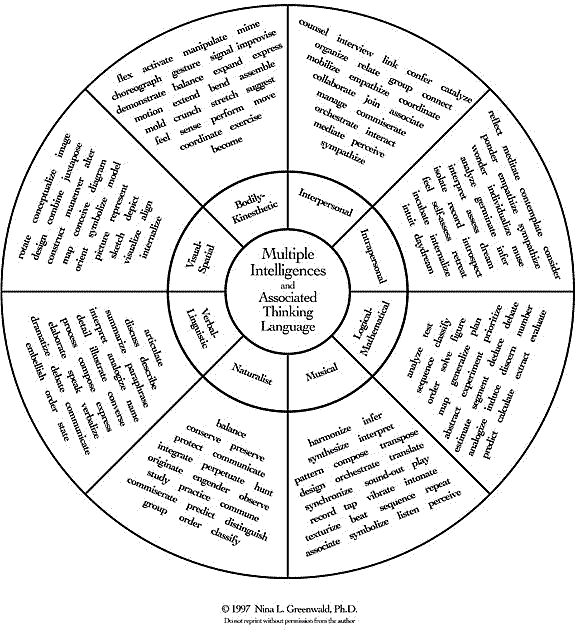Multiple Intelligence

Book
Multiple Intelligences
Explains Gardner's theory of Multiple Intelligences.
Intelligence may be regarded as being varied and flexible. Based on the cognitive-contextual theory of intelligence of Howard Gardner, learners demonstrate seven main intelligences. These are: logical/mathematical (reasoning/number smart), linguistic (word smart), spatial (picture smart), musical (music smart), kinesthetic (body smart), interpersonal (people smart), and intrapersonal (self smart). In more recent writings, Gardner has included other intelligences such as naturalist and existentialist. The first seven intelligences are most relevant to classroom learning. Multiple Intelligences gives you the essential gist of this interesting theory.
It is fascinating to see how each one of us have our own dominant areas of abilities or intelligences. Once we realize this, we will be able to better appreciate the differences among our learners. Our eyes will be open to those not so “standard” intelligences that the school system requires all students to demonstrate. We will begin to provide learning activities that come with choices for students.
Naturally, students choose activities from their areas of interest. This does not imply that students always go for their own area of intelligence. Providing group and individual activities to support other areas of intelligence is essential. Magically, students will start doing better even in areas they were not so capable in—the “standard” intelligent activities. Gardner’s Eight Intelligences [pdf] gives you suggestions of activities to provide for these areas of intelligences.
A teacher can identify the MI areas of students. Observing students is one way. Numerous MI surveys are available on the internet for free. Here is one that is simple, Multiple Intelligences Inventory [pdf] which is designed to check the dominant intelligence/s of a person. Why not try the instrument yourself? It is a good idea to have your students to take one of these checklists, too.
I know of schools where the curriculum is centered on MI. In such schools, students are given inventories to identify their areas of strengths and weakness. This allows for choices as students participate in learning activities, thus allowing them to participate through an ability they are comfortable with such as writing, drawing, and discussing. Teachers may also provide scaffolded activities to boost students’ areas of weakness. No doubt such learning is so much more fun for students. That leads us to the importance of motivating students.

